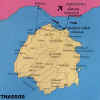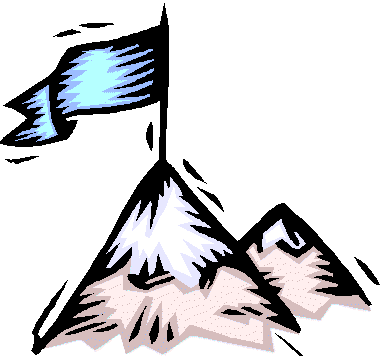Orpheus Hellenic Folklore Society Newsletter
| Hara
Deliyannis Returns for a Summer Visit |
 The
summer season for the Orpheus Dance Troupe usually includes performances at outdoor ethnic
festivals and church picnics. This summer was made even more special for the group because
for more than five weeks, the Troupe had the pleasure of hosting Ms. Hara Deliyannis, a
guest instructor from Greece. Hara has been a member and instructor with the
renowned Lykeio of Greek Women Dance Group in Athens for over 30 years during which time
she has taught at other branches of this national cultural organization. She is not a
stranger to Chicago however, as she has relatives in the city and had previously taught at
Orpheus practices two years ago. Back then, she brought educational material for the group
from other Lykeio instructors. Soon though, she was transformed into being one of the
troupe's favorite instructors, teaching her own dance repertoire.This year, Hara had the opportunity to instruct not only
at the adult group practices but also several of the youth group's summer practice
sessions. Her experience in stage presentation, instructional techniques, knowledge of
costumes and accessories and most of all, her effective style in dealing with dancers was
extremely useful. Hara's son, Rafael, also made the trip and had the chance to participate
in several of the Troupe's summer performances. The presentations at the Evanston Ethnic
Art Fair and the Greek Town Festival included material that was covered during the summer.
Hara and other instructors from the Lykeio, such as Nancy Harmanta, continue to
advise the Troupe in all matters and we are sincerely grateful for such expert and
generous assistance.
Our gratitude and thanks go to Mrs.
Vadevoulis and La Francese Bakery for sponsoring Hara's trip to Chicago. Without their
assistance, the Orpheus Dance Troupe would not have been able to acquire the knowledge and
resources that Hara's presence brought to the group. The Troupe is committed to presenting
the Greek American community with elements about its heritage and culture, which are
authentic and inspiring. The
summer season for the Orpheus Dance Troupe usually includes performances at outdoor ethnic
festivals and church picnics. This summer was made even more special for the group because
for more than five weeks, the Troupe had the pleasure of hosting Ms. Hara Deliyannis, a
guest instructor from Greece. Hara has been a member and instructor with the
renowned Lykeio of Greek Women Dance Group in Athens for over 30 years during which time
she has taught at other branches of this national cultural organization. She is not a
stranger to Chicago however, as she has relatives in the city and had previously taught at
Orpheus practices two years ago. Back then, she brought educational material for the group
from other Lykeio instructors. Soon though, she was transformed into being one of the
troupe's favorite instructors, teaching her own dance repertoire.This year, Hara had the opportunity to instruct not only
at the adult group practices but also several of the youth group's summer practice
sessions. Her experience in stage presentation, instructional techniques, knowledge of
costumes and accessories and most of all, her effective style in dealing with dancers was
extremely useful. Hara's son, Rafael, also made the trip and had the chance to participate
in several of the Troupe's summer performances. The presentations at the Evanston Ethnic
Art Fair and the Greek Town Festival included material that was covered during the summer.
Hara and other instructors from the Lykeio, such as Nancy Harmanta, continue to
advise the Troupe in all matters and we are sincerely grateful for such expert and
generous assistance.
Our gratitude and thanks go to Mrs.
Vadevoulis and La Francese Bakery for sponsoring Hara's trip to Chicago. Without their
assistance, the Orpheus Dance Troupe would not have been able to acquire the knowledge and
resources that Hara's presence brought to the group. The Troupe is committed to presenting
the Greek American community with elements about its heritage and culture, which are
authentic and inspiring. |
| Another Exciting Year Begins for the Youth Group |
 The Orpheus Youth Group has ushered
in the fall season with the start of its third consecutive year of dance classes.This year's sessions began on September 14, and the
group is eagerly anticipating another full year of learning traditional folk dances. Again
this year, classes are being held at the Chicago branch every Thursday evening, and at the
Glenview branch every Saturday afternoon. All youth ages 10-14 are encouraged to come for
dancing and fun! The Orpheus Youth Group has ushered
in the fall season with the start of its third consecutive year of dance classes.This year's sessions began on September 14, and the
group is eagerly anticipating another full year of learning traditional folk dances. Again
this year, classes are being held at the Chicago branch every Thursday evening, and at the
Glenview branch every Saturday afternoon. All youth ages 10-14 are encouraged to come for
dancing and fun!Plans are underway for the group to expand its repertoire to include dances from the Epirotan region of Metsovo, Anatoliki Roumelia (Eastern Thrace) and the islands of Limnos and Kos. Basic instruction will continue to focus on the mainland regions of Macedonia and Epirus and emphasis will be placed on expression, dancing in couples and singing. The young dancers can look forward to dancing at the annual Museum of Science and Industry Christmas Around the World event in December, which has always been one of the highlights of celebrating the Christmas season. In May, the annual Skokie Festival of Cultures is another venue for the young dancers to join the adult group in displaying their dancing skills. , The OHFS is extremely proud of its youth program, and each year the group has grown to include more young dancers and add new material to its repertoire. Also, it has been exciting and rewarding to see members of the youth progress to performing with the adult group this past year! Classes are held every Thursday at River Park in Chicago from 6:15 - 7:15 p.m. and every Saturday afternoon in Glenview from 1:15 - 2:15 p.m. For more information or to register your child, please contact Orpheus Youth Group Coordinator Bessie Kouchoukos-Grosso at 773-286-5132 or Yannis Economou at 847-657-0958 or visit www.ohfs.org for practice schedules and registration fees. |
| The Island of Thassos |
 Thassos, the northernmost of the islands of the Aegean Sea, is of volcanic
origin, mountainous, and of great natural beauty. Situated close to the mainland, it faces
the boundary between Macedonia and Thrace. It belongs to the jurisdiction of the
Prefecture of Kavala. Thassos, the northernmost of the islands of the Aegean Sea, is of volcanic
origin, mountainous, and of great natural beauty. Situated close to the mainland, it faces
the boundary between Macedonia and Thrace. It belongs to the jurisdiction of the
Prefecture of Kavala. The population of Thassos is approximately 18,000 and is distributed between the capital Limenas and ten other villages, of which the most modern is Limenaria, on the southwest coast. In the coastal areas, tobacco and olives are cultivated. The marble quarries of Thassos have always been famous. Minerals worked today include silver, antimony, and zinc. Mythology says that the island took its name from the hero Thassos who reached the island in search of his sister, Europa, taken away by Zeus who was in love with her. Excavations attest to the fact that Thassos was inhabited from Prehistoric times. In essence, however, the island's history begins with the arrival of the first Greek settlers from the island of Paros. In the beginning of the 7th century BC, Parians under Telesikli's command, who was poet Archilochos's father, settled the area around Limenas and established their capital named Thassos. The island became a wealthy commercial center, known throughout the Mediterranean for its marble, wine, oil and mines. The island's decline began during the Byzantine period. Thassos was occupied by the Franks (1205), the Byzantines (1350) and, for many centuries, by the Turks (1455-1813). Thassos, like the rest of Greece, has a rich folklore. Today, the traditional customs on the island have disappeared, giving way to the modern way of life. However, many of the local customs are celebrated during important feast days and festivals. Nowadays the use of traditional costumes has been abandoned. The colored and ornate traditional costumes are now exhibited in museum halls or worn during festivities. However, despite their abandonment in everyday life, their aesthetic value is great. The handmade adornments are distinguished for their inventiveness and skill. The imaginative ornaments that decorate them are the works of experienced hands. They are individual works, the creation of which required time and labor. The female costume of Thassos consisted of the shirt, the long dress, in bright colors, and the gold embroidered waistcoat. Over the dress, the women used to wear a colorful apron with round-laced edges. The waist was wrapped with a wide belt. A kerchief with long fringes completed the costume. The men's costume was simpler. The lower part of the body was covered by the dark-colored vraka (breeches) while on the upper body they wore a white shirt with long sleeves and over it the gileko (vest), a short sleeveless waistcoat. The waist was wrapped with a long and wide belt with fringes while the head was covered by a fez.  Important aspects of
the folklore include customs that accompany the engagement, wedding or baptism and
embellish Christmas, Epiphany and Easter. Traditions also include the events that
accompany labor such as the grape harvest, the treading of grapes and the picking of
olives. These are customs met, with small variations, all over Greece. Important aspects of
the folklore include customs that accompany the engagement, wedding or baptism and
embellish Christmas, Epiphany and Easter. Traditions also include the events that
accompany labor such as the grape harvest, the treading of grapes and the picking of
olives. These are customs met, with small variations, all over Greece.
Thassos has a rich musical tradition with a characteristic lyric and musical color. The principal instruments of the traditional songs of Thassos were the bagpipe, violin, clarinet, lute, daouli, darabukke, and cimbalom. Other instruments used were the mandolins, which at the beginning of the twentieth century were often played in Thassos by local instrument players. A short time later the accordion appeared. At the same time the shepherd pipes were used. These were made by the people of the fields and the mountains. Very little is known about the traditional songs of Thassos. But all these beautiful songs are gradually disappearing together with the old people. These songs speak of love, happy love, unfulfilled love, murder because of love, songs of Easter, carnivals, "table" songs etc. The most characteristic are the "table" songs. By contrast, the dancing songs are more easily transferred from place to place due to their entertaining character. Most of the dances of Thassos are open or broken circle dances consisting of a chain of mixed women and men linked together by various handholds. A woman usually leads the dancers. The majority of the dances move in a counter-clockwise direction with the dancers facing slightly right of the center of the circle maintaining themselves on the perimeter of the circle. The dances usually require roughly the same effort as a person walking. The most common dance pattern used is the "Sta Tria" i.e. "in or by threes", which means that the dancer takes three walking steps in a somewhat sideways direction to the right. Some of the songs that follow this pattern are "Ola ta poulakia" (All the Birds), "Chrisos Aetos" (Golden Eagle), "Poulaki Eixa sto Klouvi" (I Had a Bird in a Cage), "O Orkos" (The Oath). The "Sta Tria" pattern consists of a total of six movements. All patterns of dances are repeated continuously or alternate with another pattern until a song ends. . |
| Sources: "Thassos"-Adams Editions "Traditional Songs of Thassos" - Roula Loukoumi-CD Booklet Lyceum of Ellinidon of Athens Booklet - Winter Dance Conference, Tarpon Springs, Florida Internet Links: http://www.greekisland.swinternet.co.uk/thassos/ilinks.html |
| Island Hoping:
Paros and Thassos By Yannis Economou |
 While vacationing in Greece, it is almost unthinkable not to look for an
opportunity to see a Greek folk dance performance or visit a bookstore or museum with the
hope of finding more resources to bring back to the Orpheus Dance Troupe. It is the place
where everything started, after all! While vacationing in Greece, it is almost unthinkable not to look for an
opportunity to see a Greek folk dance performance or visit a bookstore or museum with the
hope of finding more resources to bring back to the Orpheus Dance Troupe. It is the place
where everything started, after all!My trip to Greece this summer with my brother
Kostas and the rest of the family found us, at the beginning of our trip, on the island of
Paros. Upon our arrival, we contacted Nikos Gavalas, who currently resides in
Florida. Nikos lived for more than ten years on the island where he also performed
with the local dance group. We became acquainted indirectly from his attendance at a dance
conference in Tarpon Springs, Florida where he taught dances from Paros and met up with
participating Orpheus members. He informed us that the local dance group was performing
that same evening so we rushed to the island's capital, Naoussa. The performance took
place at a picturesque yard in one of the town's churches. Local musicians filled the
night air with traditional island music that accompanied the dancers and singers. By
coincidence, one of the guests attending was Mr. Alkis Raftis, president of the Dora
Stratou Dance Theater. We introduced ourselves to him and he was pleased to hear of
our close involvement with his organization during past dance conferences as well as
during the exhibit of the Dora Stratou costume collection at the Chicago Historical
Society a few years ago. Off we were to the island of Thassos in Macedonia, where once again we conducted dance lessons for many eager members of the bungalow complex in which we reside every summer. The enthusiasm was as high as ever and all participants had the opportunity to demonstrate the fruits of their efforts during a local gathering and also at my son's baptism reception. It is so refreshing to observe individuals from all parts of the world enjoying and appreciating this experience so much and looking forward to it every year! While in Athens, a couple of days before our departure back to Chicago, we had the opportunity to attend one of the Dora Stratou performances at their theater in Philopappou Hill. George Mavropoulos, the group's director, spotted us in the audience and was happy to see us again. He informed us that after its summer run the dance group would embark on a European tour. We also met up with Hara Deliyannis, our summer guest instructor. It had only been a few days since we had been sweating together during our practices in Chicago! Kai tou hronou! |
| Metsovo: A Well-Kept
Greek Secret By Alexander Kapotas |
 In northern Greece in the area of Epirus, there is a small town
called Metsovo. Although only about 3,000 people call this place home, people visit
Metsovo for many different reasons. It boasts steep mountain slopes for the ski
aficionados and wonderful dishes and cheeses for those seeking to taste the flavors of the
region. Metsovo has rich historical and folk traditions, and design of the homes and
buildings in the town makes one feel as if he has left Greece and warped into a village in
the Alps. Anyone I had ever spoken to who visited Metsovo insisted that I should visit the
town the next time I was in Greece. After performing for the local Metsovitan society
dinner dance in 1999, I promised myself I would make my way there and discover firsthand
exactly what makes this town so remarkable.
In northern Greece in the area of Epirus, there is a small town
called Metsovo. Although only about 3,000 people call this place home, people visit
Metsovo for many different reasons. It boasts steep mountain slopes for the ski
aficionados and wonderful dishes and cheeses for those seeking to taste the flavors of the
region. Metsovo has rich historical and folk traditions, and design of the homes and
buildings in the town makes one feel as if he has left Greece and warped into a village in
the Alps. Anyone I had ever spoken to who visited Metsovo insisted that I should visit the
town the next time I was in Greece. After performing for the local Metsovitan society
dinner dance in 1999, I promised myself I would make my way there and discover firsthand
exactly what makes this town so remarkable. Although most people head to the coastlines and beaches of Greece during the summer to escape the heat, I was determined to find my way to Metsovo. I met up with my friend Nick, and carrying only our backpacks, cameras, and a few bus schedules written on scrap paper, we caught the early morning bus for Ioannina, which would eventually take us to our destination. During the bus ride, Nick asked me why I wanted to visit Metsovo. "I heard it was a cool place," was my response, even though I really didn't;t have an answer. And a cool place it was indeed! We knew we were going to love Metsovo the moment the bus pulled up to the station. The streets were paved with stones and every building featured a stone ground floor and wood-sided upper floors complete with eaves and overhangs. Vendors lined the streets, welcoming us into their stores as we walked by, and occasionally we would pass two or three yiayiades walking arm-in-arm, dressed in their traditional aprons and kerchiefs. As we walked along the narrow streets, we made our way in and out of stores and talked to the locals. Nick and I kept expressing our amazement: because of its unique characteristics, Metsovo had to be one of the best-kept secrets in Greece! After dinner, we went looking for recordings of traditional folk music from Metsovo. Following several unsuccessful attempts, we were advised to visit Eleni, the café owner's wife who also directs the local dance troupe. I introduced myself to her and it was not long before we figured out that her troupe had loaned us the beautiful costumes we used for our performance a year earlier. Eleni left the store and returned within minutes carrying exactly what I was looking for, a CD recording of folk music from Metsovo. Nick and I left the café, walked down to the square, and ran into Eleni once again. This time, she introduced us to a few of the other dance troupe members: Georgia, Matoula and Lambi, the president of the folk society who was in Chicago in 1999 for the dinner and saw our performance. Although we had not previously met, he recognized me instantly as the "tall guy" from the video of the performance. After this experience, I became convinced that in order to understand exactly how small the world is, one must travel to the other side of it. I'm sure many of you will agree. We spent the remainder of our evening with our new parea, who showed us around Metsovo and explained to us its history and charm in a way that no book or brochure could ever capture. Conversation was abundant and the humor of our company kept us laughing throughout the whole night. In fact, we changed our plans the following night to stay a bit longer in our new "favorite" city. We were able to see the troupe practice for the big dance festival planned for the weekend, and they ran through a series of dances, many of which were the exact same steps I had learned just the year before. They invited me to join the line and I was able to pick up on the step as if I had been a part of their troupe for years. The bond that common folk dance knowledge creates between people continues to amazes me. After two days in Metsovo, the time came for us to leave. We did the customary exchange of addresses and phone numbers and left the village with the promise that we would meet up again one day, either in Metsovo or in the States. Apparently, plans were being made for the whole group to visit Chicago and perform at the annual Metsovitiko society dinner, the same dinner where my desire to visit this place was born. I anxiously await the next time I can visit Metsovo, and hope I get the chance to one day be reunited with the friends I have there. However, it might happen that one day I could be enjoying a frappe in a coffee shop in some corner of the world and turn around to see that same parea sitting at the table next to me, and we could pick up our friendship right where we left off. |
| Welcome to new Orpheus members: Peggy
Gatsinos, Eleni Gouvas, Chris Papadopoulos, Sophia
Radlowski, and Ageliki Siargos. Welcome to new Orpheus Youth members: Danae Alexopoulos, Nicole Alexopoulos, Irene Chiotis, Joanna Chiotis, Anna Colis, Vivian Danaskos, Joy Economos, Pamela Economos, George Kakis, Vasiliki Kourkouvis, George Louras, Pete Louras, Charlie Mellos, John Mellos, Sylvia Naum, Peter Papageorgiou, Renee Papageorgiou, Alexandra Usher, Nicholas Vass, Peter Vass. Welcome! |
 Birthday greetings to Patty
Pappas on October 4th, Sophia Prassas and Angie Siargos
on October 9th; Marianna Damianides on October 11; Nikos Paras
on October 21st; and John & Kosta Economou on December 30th. Belated
birthdaywishes to Harry Georgakopoulos on August 24th. Birthday greetings to Patty
Pappas on October 4th, Sophia Prassas and Angie Siargos
on October 9th; Marianna Damianides on October 11; Nikos Paras
on October 21st; and John & Kosta Economou on December 30th. Belated
birthdaywishes to Harry Georgakopoulos on August 24th.Na ta ekatostisete! |
| Namesday wishes to Dimitri Dallas and Jim Thanopoulos on October 26; Barbara Dallas and Barbara Siargos on December 4; Kathy Tomaras on November 25th; Nicole Alexopoulos, Niko Paras, Niki Rigas, and Nicholas Vass on December 6th; and Christina Economou, Christina Kakavas, Christina Minakakis, Christina Pagones and Christina Rigas on December 25th. Chronia Polla! |
 Congratulations to Sophia
Tsipianitis on her new job as a math teacher at Barrington High School. Good
Luck! Congratulations to Sophia
Tsipianitis on her new job as a math teacher at Barrington High School. Good
Luck! |
| Orpheus would like to wish member Elizabeth
Rossmiller good luck as she pursues her degree in international education at
Harvard University. As part of an icebreaker, the students had 5 minutes to teach a new
skill to a peer, so Elizabeth gave her partner a crash-course in the Kalamatianos! Keep
spreading the Greek folk dance spirit, Elizabeth, and we look forward to your return! |
Last revised:
08/18/2015 07:02 PM